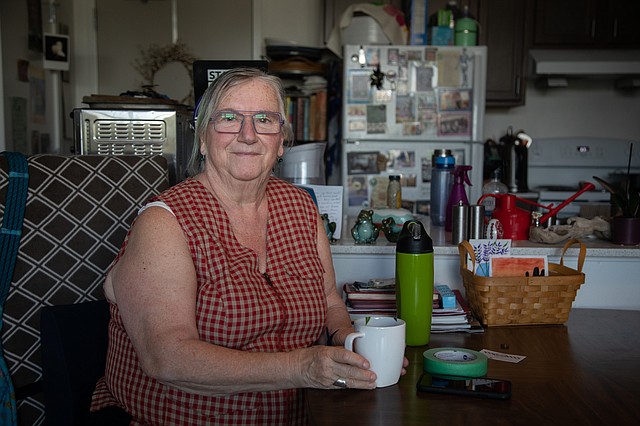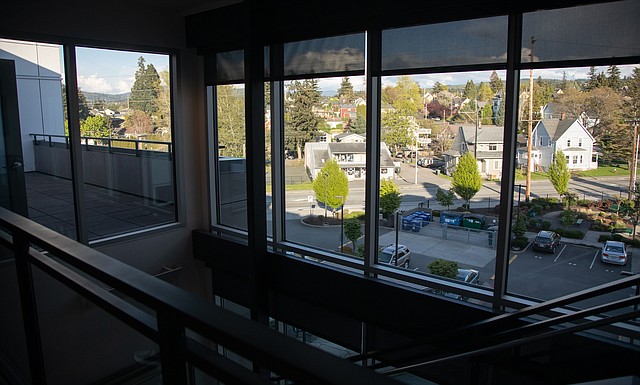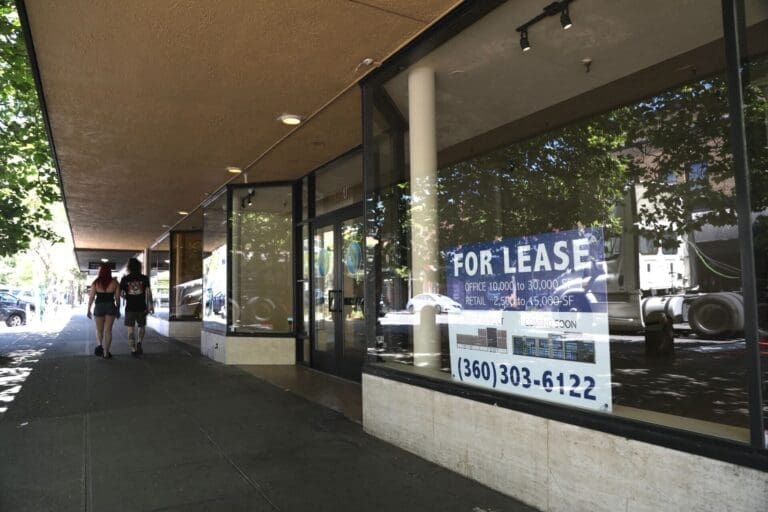Denise Powell’s apartment is filled with moving boxes, her belongings packed away after more than five years of living in the Eleanor Apartments, located in the York neighborhood.
The apartments are advertised as affordable housing for seniors. But Powell, like many other Eleanor residents, is finding it increasingly difficult to afford the building’s rising rent while living on a fixed income.
Since opening in 2017, rent has increased every year, other than a 22-month period during the height of the COVID-19 pandemic.
Now, Powell has no choice but to move.
Unlike most other residents, Powell has somewhere else to go: she was lucky to get off the waiting list for Samish Commons, an affordable housing complex managed by the Bellingham Housing Authority set to open this summer.
There, Powell is guaranteed to only pay 30% of her income toward housing costs thanks to a project-based housing voucher. Affordable housing is, by definition, paying no more than 30% of one’s monthly income toward rent and utilities, according to the Department of Housing and Urban Development (HUD).
In contrast, Eleanor residents pay, on average, 40% of their monthly income toward rent, according to Bellingham Housing and Services Program Manager Samya Lutz. The result: Nearly three-quarters of Eleanor residents are considered “rent-burdened.”
 Patty Dawn sits in her apartment. She is one of many residents who is burdened by rising rents at Eleanor Apartments. (Hailey Hoffman/Cascadia Daily News)
Patty Dawn sits in her apartment. She is one of many residents who is burdened by rising rents at Eleanor Apartments. (Hailey Hoffman/Cascadia Daily News)
The trend extends past just seniors living at Eleanor. Across Bellingham, 41% of all seniors are “severely cost burdened,” Lutz said, meaning they pay more than half of their monthly income toward rent.
Eleanor Apartments, managed by nonprofit Mercy Housing, is funded by the Low-Income Housing Tax Credit (LIHTC) program, the single largest federal funding resource for affordable housing in the U.S.
For housing developments governed by LIHTC, rental prices aren’t determined by a household’s income, but rather by the area median income. Each year, the program releases a set of maximum allowable rents by county based on that year’s area median income, and sets rents accordingly.
Eleanor, for example, prices half of its 80 apartments for those earning 30% of the area median income, and half for those earning 50%. The maximum allowable rents for Whatcom County are $510 and $850, respectively, but Eleanor is charging tenants below the allowed maximum — currently $469 or $800 per month.
Rental prices at Eleanor are far below the market rate for Bellingham, where, according to Zumper, an average one-bedroom goes for $1,450. But for seniors living on a fixed income, rents determined by the area median income are not sustainable, said Brien Thane, Bellingham Housing Authority’s executive director.
“The tax credit program is not a good fit for folks who are on fixed incomes, whether that’s seniors or others,” Thane said.
Joe Thompson, president of Mercy Housing Northwest, acknowledged the flawed nature of the LIHTC program, but said it’s better than the alternative.
“It’s an imperfect program, but still a really important program … as the primary vehicle for affordable housing right now,” Thompson said. “The alternative would be those folks would have to find housing on an open market, which would be absolutely unaffordable because in most cases, [the] rent would exceed their monthly income.”
Stan Betts, an Eleanor resident since 2021, retired about two years ago due to health reasons, with only half of his planned retirement savings. After being diagnosed with cancer, he was forced to pull from his retirement savings to pay out of pocket for treatment.
If the current trend of rental increases at Eleanor continues, he predicts he has at most four years left to live in the building before he can no longer afford to live there.
For some residents, that’s already the case.
 Catherine Chambers sits at her dining room table in her apartment. Chambers has lived in the Eleanor Apartments since it opened five years ago and has experienced several rent hikes since then. (Hailey Hoffman/Cascadia Daily News)
Catherine Chambers sits at her dining room table in her apartment. Chambers has lived in the Eleanor Apartments since it opened five years ago and has experienced several rent hikes since then. (Hailey Hoffman/Cascadia Daily News)
“People are cutting back on food, [and] right now we’ve got a double whammy because food stamps were increased during COVID and now that’s gone away,” said Catherine Chambers, an Eleanor resident.
Food items collected by residents from local food banks are left out on a table on the building’s first level for anyone in need. Food placed there “disappears right away,” Chambers said.
“My big concern is that I’m going to end up homeless,” Betts said. “That’s the primary worry that impacts people who live here now; they fear they’re going to be displaced and driven into the street by these costs.”
Mercy Housing refers to its housing governed by the LIHTC program as “permanently affordable,” because unlike programs such as Section 8, which are determined by annual federal funding, LIHTC housing promises, at minimum, 50 years of its rental units priced at 30% and 50% of the area median income.
But for residents like Betts who live on a fixed income, there’s nothing permanently affordable about living at the Eleanor — it’s only a matter of time until their rental costs become vastly disproportionate to their monthly income.
Despite the LIHTC program’s flaws, it’s the primary source of federal funding available to construct new forms of affordable housing. The reality, Thane said, is that affordable housing programs based on a household’s income are extremely limited.
The only two funding programs that determine rental prices based on a household’s income are housing choice vouchers, also known as Section 8 vouchers, and low-income public housing.
In a Bellingham City Council meeting last month, Thane told council members that despite low-income public housing being the only option that guarantees a tenant pays only 30% of their income toward housing and utilities, the U.S. federal government hasn’t allocated funding for new public housing since the early 1990s.
 The Eleanor Apartments are in the York neighborhood, on the edge of downtown Bellingham. (Hailey Hoffman/Cascadia Daily News)
The Eleanor Apartments are in the York neighborhood, on the edge of downtown Bellingham. (Hailey Hoffman/Cascadia Daily News)
Housing choice vouchers, too, are limited — nationwide, less than a quarter of those who qualify for the assistance end up receiving it, and the waiting list is years long.
Eighteen residents at Eleanor, or 24%, receive a housing choice voucher, which allows them to pay 30% of their income toward rental costs while the voucher subsidizes the rest.
Other Eleanor residents are seeking help from outside sources. Since January, 26 residents have received rental assistance from the Opportunity Council, but that funding is set to run out in June with no planned extension.
Residents have raised concerns about their rising rents to the city council, with hopes of receiving rental assistance through city funds.
Council member Dan Hammill met with Eleanor residents earlier this month to discuss their needs, and said he plans to speak with the Planning and Community Development Department to determine potential funding sources for rental assistance.
“[Seniors] should not have to worry and stress about where they live,” Hammill told residents.
At a May 10 city council meeting, council members unanimously passed the 2023–27 Consolidated Plan, which allocates about $9.5 million annually toward housing-related issues. Council members identified seniors with fixed incomes as a priority demographic when planning affordable housing, but did not mention rental assistance for them.
“Truly addressing the need is bigger than the City of Bellingham or Whatcom County can fund,” Thane said. “We really need our federal government to step up and increase the Section 8 program significantly.”




